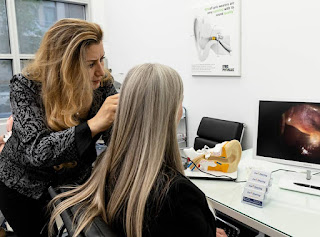Types of Hearing Aids- Ear & Hearing Audiologist Melbourne

Remember those bulky, uncomfortable and rather unattractive buff-coloured hearing devices? Thankfully, they’re a thing of the past! In recent years, electronics have been miniaturised to the point where designers have been able to focus more on aesthetics. As a result, people can now lead unencumbered, fully functional lives with a solution that’s so tiny; you’d never know they were wearing one. Hearing Aids can be classified into 3 groups: Daily Wear In-The-Ear, Daily Wear Behind-The-Ear, Extended Wear. Check link if you are finding hearing test Melbourne Each group may come in different styles. 1) Daily Wear ITEs In-The-Ear styles Invisible In the Canal (IIC): Being the tiniest custom made devices, they offer high cosmetic appeal as they are nearly invisible when worn. IIC styles fit very deeply in the ear canal, allowing the wearer to benefit from the pinna’s natural localization and resonance characteristics. They are typically fit for mild or moderate hearing losses. 2) Daily W
